To explain how I think about Commander, let me tell you about a thought process that quickly got derailed.
Ok, people say that to build a casual commander deck, I should just find something I like doing. I guess I generally enjoy looping my graveyard into my library. Alright, how can I make a deck that does that? Well, first of all, I need to draw a lot of cards to make it relevant. I probably want to play Blue/Green. Oh, I know, I also really like Slogurk, the Overslime, and Slogurk likes milling, which can make shuffling cards back more relevant. Ok, cool, I’ll build Slogurk.
So, Slogurk is good at putting lands in my hand, so I’m going to want a lot of ways to put lands from my hand into play, like Sakura-Tribe Scout, Skyshroud Ranger, Exploration, Burgeoning, and Azusa, Lost but Seeking. I’ll need Tatyova, Benthic Druid and Aesi, Tyrant of Gyre Strait to make sure I have things to do/find more lands.
Oh! Hey, this would be a good opportunity to use Bazaar of Baghdad. Hmm, if this ends up being too strong for a casual table, I’d feel pretty bad about beating people with a $3,000 card. I wonder if I can make this work in cEDH.
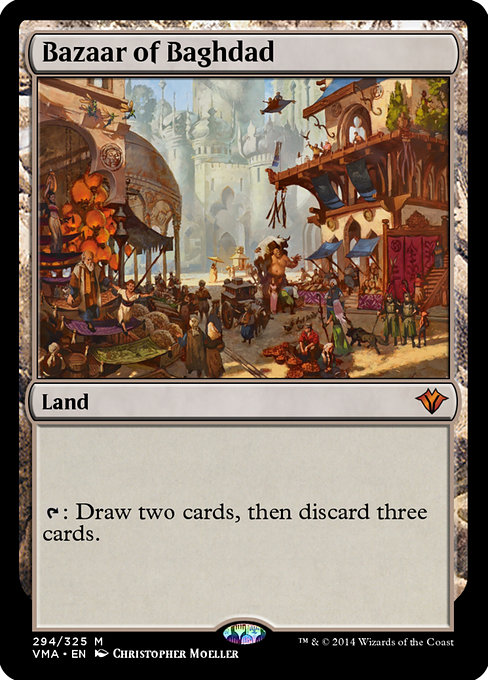
Motivation
While working on the deck from there, I realized something about myself. I’ve seen a lot of things happen in games of Magic, and “I searched scryfall for every card that has some characteristic and put them together in a deck” just isn’t that cool to me. For a deck to feel really cool to me, it needs to feel clever, and the best way for a deck to be clever is for it to work within the constraints of needing to actually try to win. The really fun part of deckbuilding isn’t researching how many cards can put extra lands into play and which ones have strong landfall payoffs, it’s figuring out how to balance that with the right interaction.
Also, and maybe even more importantly, I don’t like thinking of something sweet a deck could do, and then needing to second guess whether that thing is too sweet (powerful). With cEDH, I get to try my best to make something work, and when I do that, I’m excited to play the games because I can see whether it worked and what it might need and then try to make it better. I love having clear objectives.
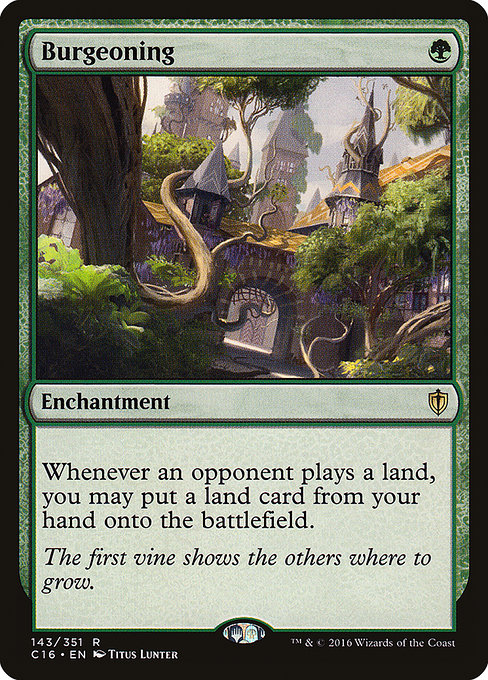
Is Slogurk an optimal cEDH commander? Probably not. Do I think I can tune the deck to a point where I can win more than my share of cEDH games? Yeah, probably.
Working on this deck in contrast with Hidetsugu and Kairi also taught me something else about myself as a player and how it relates to cEDH. In my article about Hidetsugu and Kairi I talked about identifying an end game state and working backwards to construct a deck that arrives at that state. This is not the method I used for building my other decks, and I actually don’t prefer it. I prefer thinking about how my games are going to start and how I’m going to generate value. Yes, it’s important to be aware of possible end states, but I’ve realized that I think quickly assembling a productive engine is actually more important.
This is why “Blue Farm” (Tymna the Weaver/Kraum, Ludevic’s Opus) is so successful–it has some end game combos it’s setting up, but the commanders are chosen to play a value game. If you can’t establish a real way to pull ahead without trying to win. You have a real problem if stax pieces prevent you from going for your win while other players pull further ahead. More importantly, in the normal course of a game with multiple combo decks, the core strategic decision is when to try to win, which is evaluated based on when you think other players’ interaction has been exhausted. Often, this means waiting for your moment, and it’s really important to be able to take productive actions while you’re waiting.
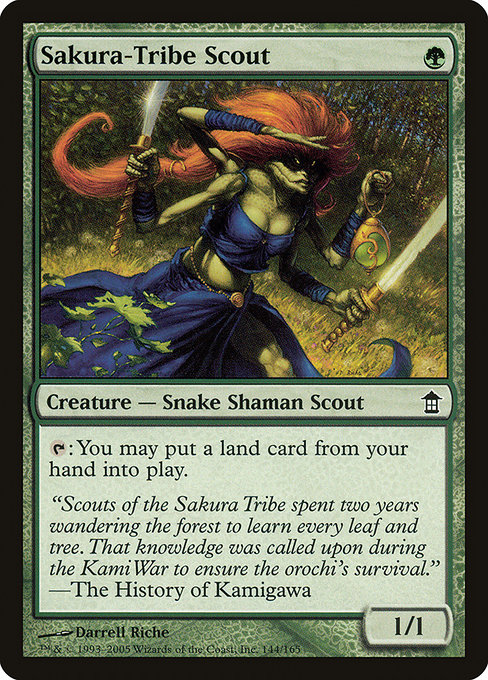
Slogurk is effective at taking productive early game actions. The question is whether I can find the right disruption to stop other players from winning, and whether I can ever actually win a game myself.
What We’re Doing Here
The basic idea with Slogurk is that every time Slogurk sees three lands go to the graveyard, you can return it to your hand to get three lands from your graveyard back into your hand. Slogurk isn’t really worth trying to interact with for your opponents, because you get lands back when it leaves play, and you have enough mana after doing to so make recasting easy. Graveyard hate can effectively stop your Slogurk engine, but removal should generally ignore Slogurk.
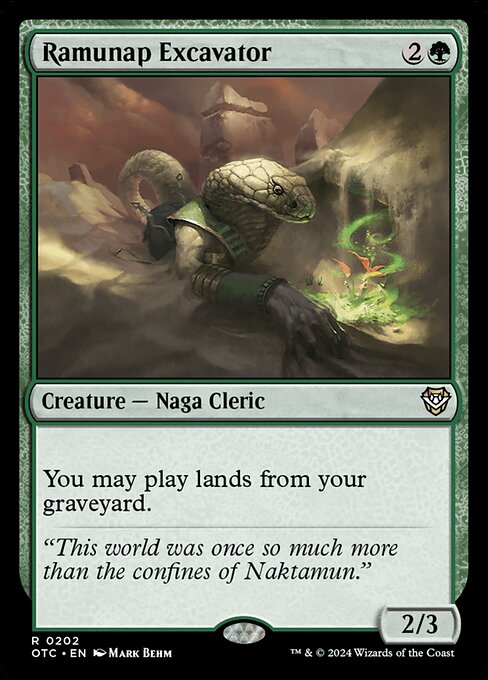
The simplest way to get a lot of mana with this is to use fetch lands and cards that let you put extra lands into play. This lets you ramp, but it also means you’re vulnerable to Opposition Agent. So for your core functionality to work, you need to be able to answer Opposition Agent and any opposing graveyard hate. This means you need some amount of creature removal. I have Ulvenwald Tracker, Mouth of Ronam, Rapid Hybridization, Resculpt, Oko, Thief of Crowns, Beast Within, and Kogla, the Titan Ape in addition to temporary answers like Colossal Skyturtle, Cyclonic Rift, and Otawara, Soaring City.
You can potentially work around Cursed Totem by channeling Otawara, Soaring City to bounce Slogurk, who can then return Otawara with two other lands. Otawara and Boseiju, Who Endures are some of the best cards in the deck, since they give you repeatable, uncounterable interaction.
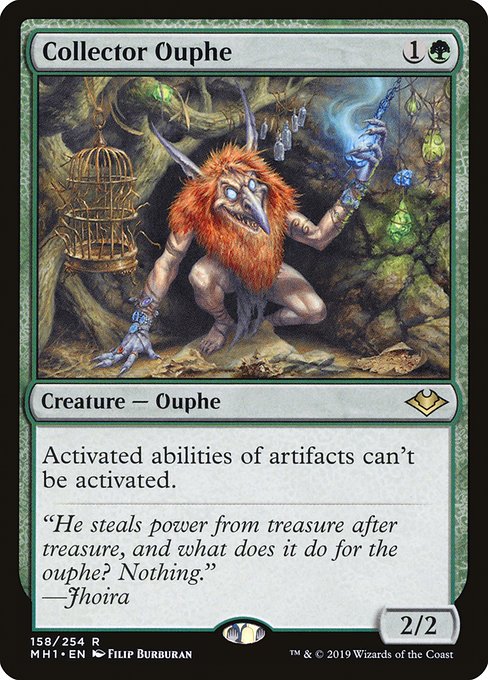
This deck needs time to get going, so it’s important to stop faster decks from winning. This can be accomplished with a mix of counterspells and stax pieces. Currently, I have Collector Ouphe, Manglehorn, Null Rod, and Damping Sphere for lock pieces, with Fierce Guardianship, Force of Negation, Force of Will, An Offer You Can’t Refuse, Stubborn Denial, Swan Song, Mana Drain, and Mindbreak Trap for counterspells.
I have a lot of cards devoted to playing more lands, getting more mana, and drawing more cards:
- Burgeoning
- Carpet of Flowers
- Mystic Remora
- Rhystic Study
- Teferi, Master of Time
- Life From the Loam
- Hedron Crab
- Sakura-Tribe Scout
- Skyshroud Ranger
- Faerie Mastermind
- Jace, Vryn’s Prodigy
- Shigeki, Jukai Visionary
- Azusa, Lost but Seeking
- Ramunap Excavator
- Tireless Provisioner
- Tireless Tracker
- Oracle of Mul Daya
- Tatyova, Benthic Druid
- Aesi, Tyrant of Gyre Strait
- Ancient Greenwarden
- Kodama of the East Tree
- Cultivator Colossus
Some of those are incidentally combo pieces. We’ll get to that later.
Also, note that none of these are artifacts. No Sol Ring, Mox Diamond, or Mana Crypt. This deck needs to play a huge number of lands because searchable utility lands give the deck a lot more flexibility, but it also needs fetch lands and fetchable lands. This means it’s hard to justify space on non-land mana sources, and also I’m playing Null Rod and Collector Ouphe, so I’m planning to try and blank those cards anyway. Usually, artifacts are important to ramp, but here I can accomplish that by putting additional lands into play instead.
I also have a lot of tutors, which is kind of green’s thing in cEDH
These tutors make it pretty easy for me to find specific creatures and lands, but not other cards.
So what is all this trying to do?
One thing I’m doing is generating a lot of objects/card advantage, and mana, so I can cast big spells. Currently, I’m only playing The Great Aurora, which will typically draw many more cards for me than anyone else. It’ll allow me to put way more lands onto the battlefield, while also clearing every hate piece. I think this is worth playing, but I’m honestly not sure about either of these. Neither directly wins the game, and neither can be cast early, so they might both not be worth playing.
Combos
I’m playing a few infinite combos.
If I cast Walk the Aeons with buyback while I have Slogurk, the ooze will get three counters when I sacrifice the lands. I can then return Slogurk to return the lands, so if I have cards that allow me to play three lands each turn, and enough mana to replay Slogurk and cast Walk the Aeons, I can take infinite turns.
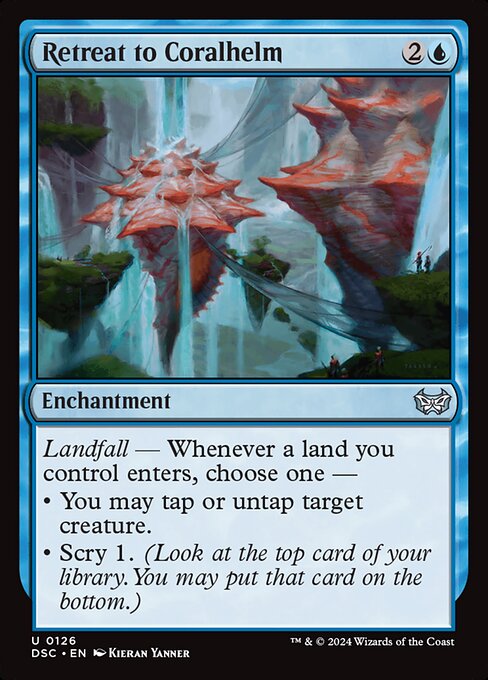
If I have Retreat to Coralhelm with Sakura-Tribe Scout or Skyshroud Ranger, and I have Simic Growth Chamber or Guildless Commons in my hand, I can tap the creature to play the land, bounce the land to its own trigger, and untap the creature with Retreat to Coralhelm, returning to the original state. This allows me to generate infinite landfall triggers. If I also have Tireless Provisioner, I make infinite mana. If I have Ancient Greenwarden, I can double the bounce a land trigger to pick up my other lands and then replay them to generate infinite mana. If I have Aesi or Tatyova, I can draw my deck. Scute Swarm makes infinite creatures, and Hedron Crab can mill all of my opponents
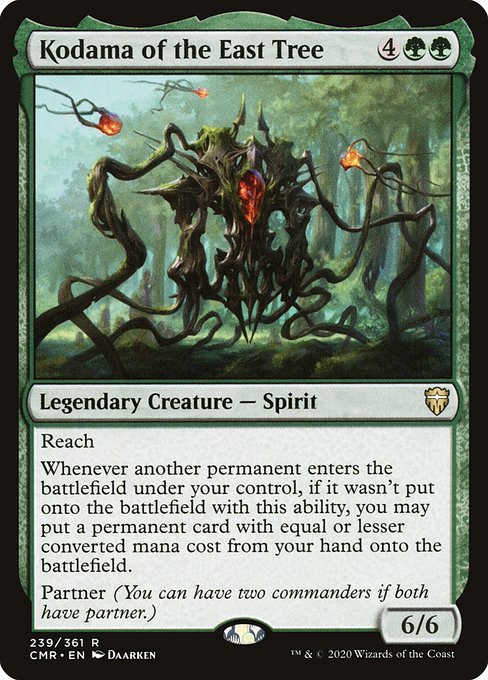
If I have Kodama of the East Tree with any of Tireless Tracker, Tireless Provisioner, Scute Swarm, and a bounce land, I can infinitely trigger the landfall creature because the object it generates triggers Kodama of the East Tree, allowing me to put the bounceland into play and pick it up again. This generates another landfall trigger, which gives me infinite of whatever object the creature makes and also combos with everything the above combo works with.
If I have infinite mana, I can also loop Shigeki and Colossal Skyturtle to infinitely rebuy my graveyard. I can find both halves of the loop with Summoner’s Pact, which I can tutor for with Tolaria West, which can be found with a land tutor. If the land tutor puts it onto the battlefield, I can either pick it up with a bounceland, or kill it with Strip Mine and pick it up with Slogurk.
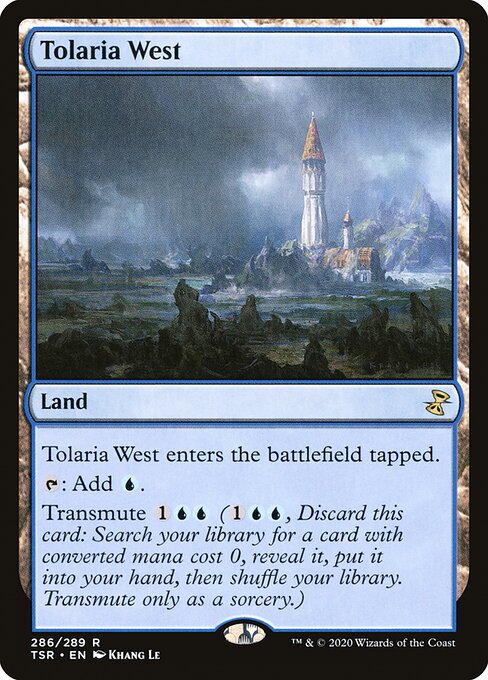
Note that all of these combos are very complicated and involve a lot of different cards. This is why I said the deck can’t win quickly. This deck is designed to play long, interactive games.
There are a couple additional spells I haven’t mentioned yet.
Sylvan Safekeeper both protects my creatures and, critically, allows me to sacrifice lands whenever needed to put counters on Slogurk. It also allows me to get a land I want to play again into my graveyard.
Endurance is a hate card that can also allow me to loop my deck if things go too far.
The rest of the deck is lands, 42 of them. A lot of those are fetch lands, but some relevant utility lands:
- Bazaar of Baghdad
- Boseiju, Who Endures
- Cephalid Coliseum
- Emergence Zone
- Geier Reach Sanitarium
- Lonely Sandbar
- Mouth of Ronom
- Mystic Sanctuary
- Otawara, Soaring City
- Strip Mine
- Tolaria West
- Vesuva
This deck is still a work in progress. I’ve only played a handful of games with it, and it still needs a bit of fine tuning. But it’s a fun deck which plays very differently than most cEDH decks, and I think there’s something solid here.
The deck will certainly change over time, but you can find my most current list here
Sam Black (any) is a former professional Magic player, longtime Magic writer, host of the Drafting Archetypes podcast, and Twitch streamer. Sam is also a Commander Cube enthusiast, and you can find Sam’s cube list here. For anything else, find Sam on Twitter: @SamuelHBlack.

